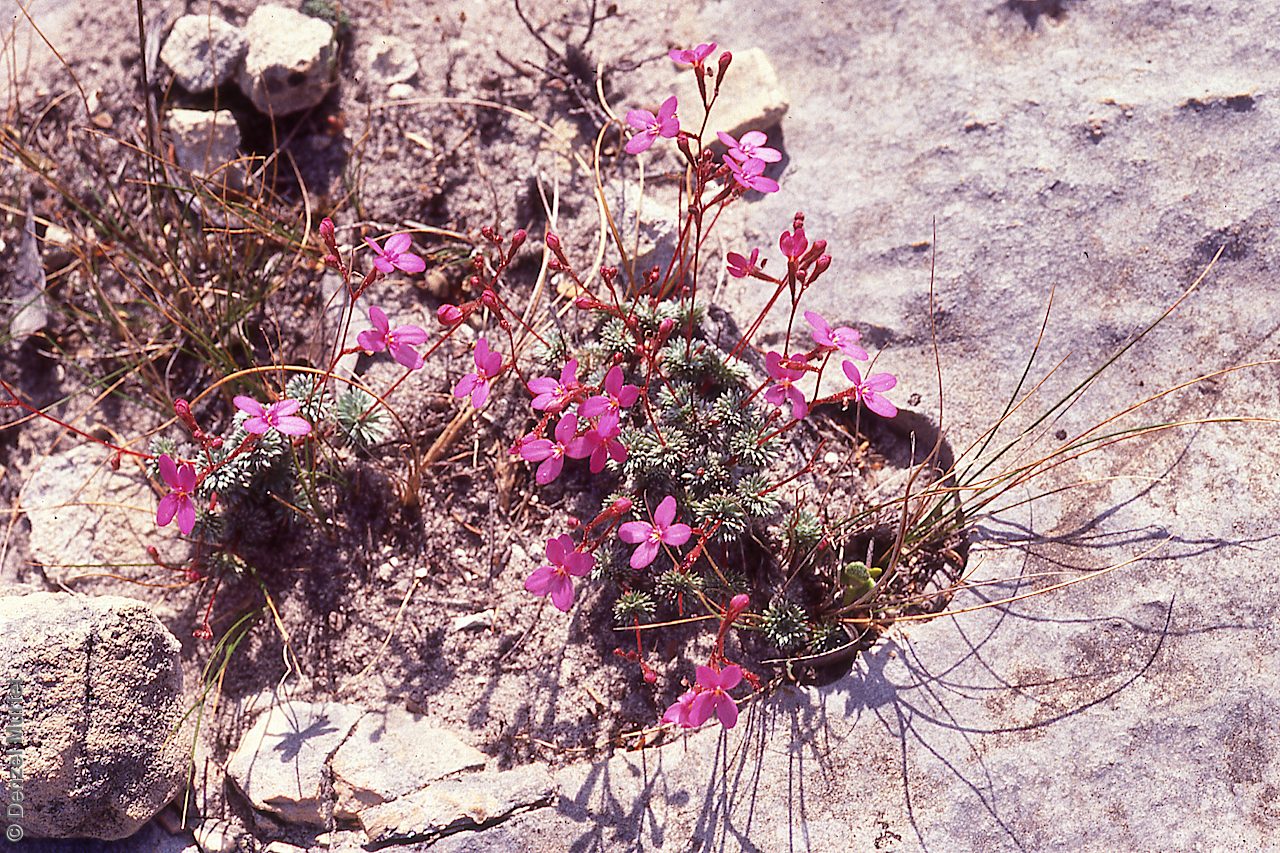
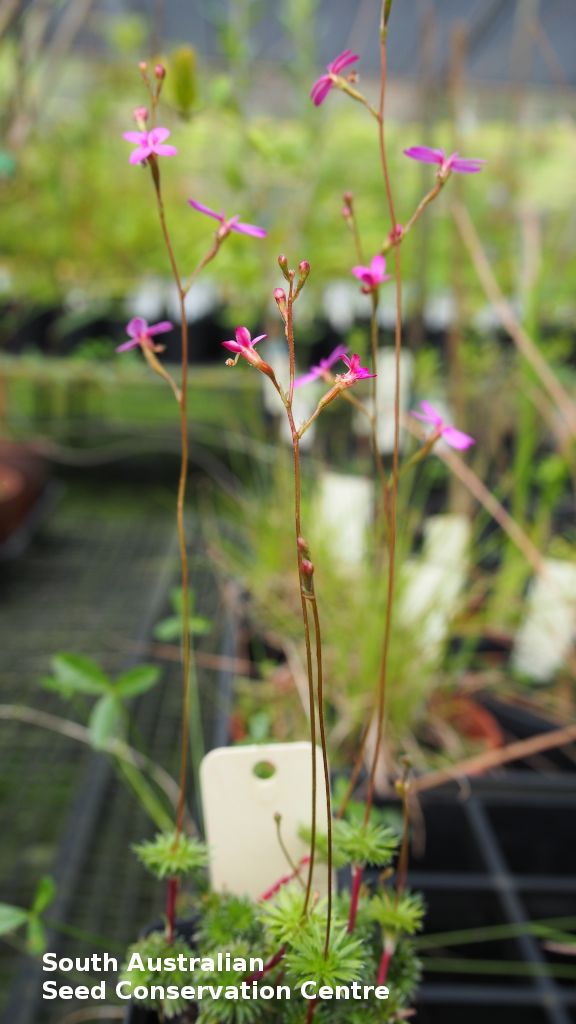
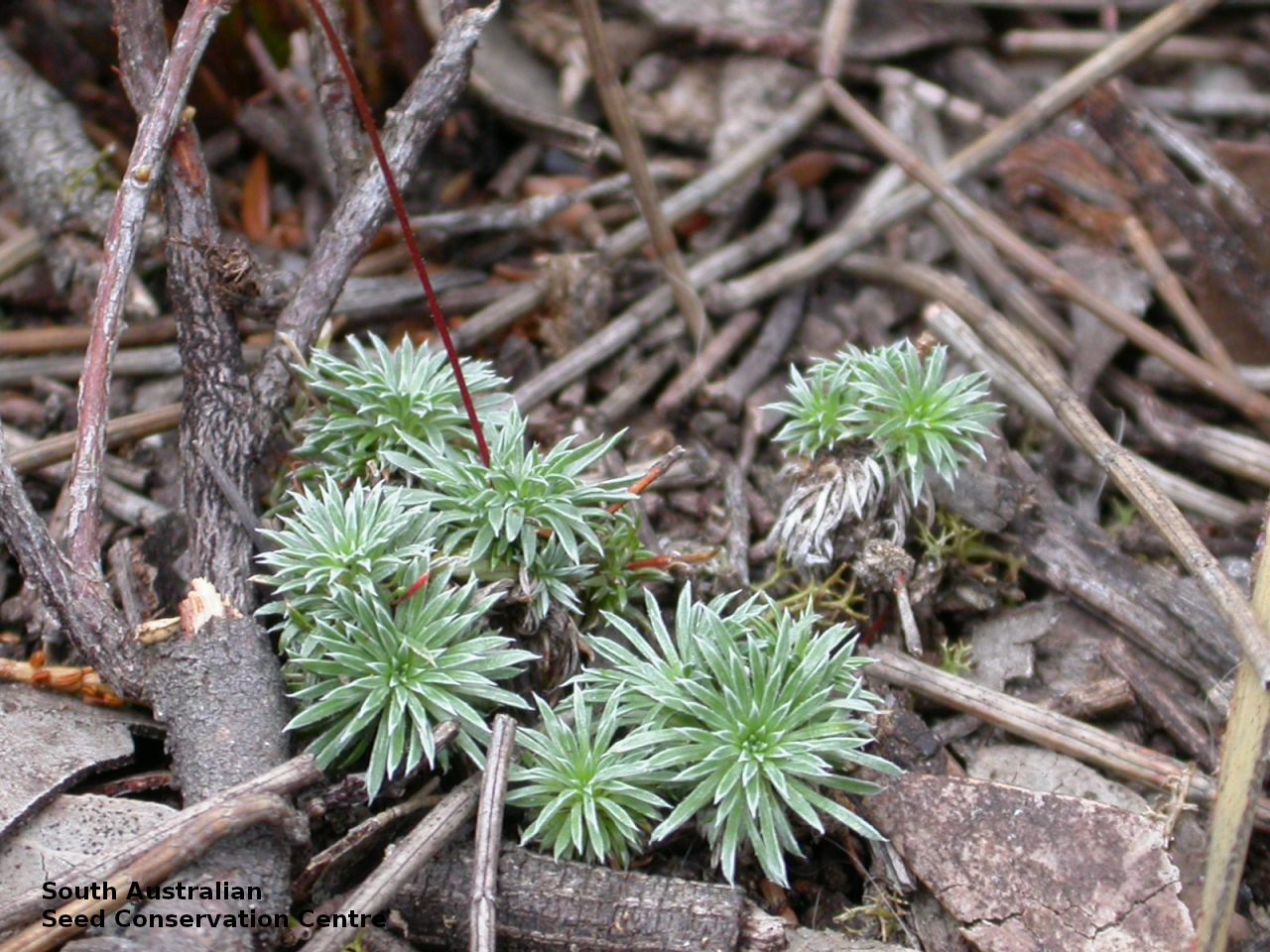
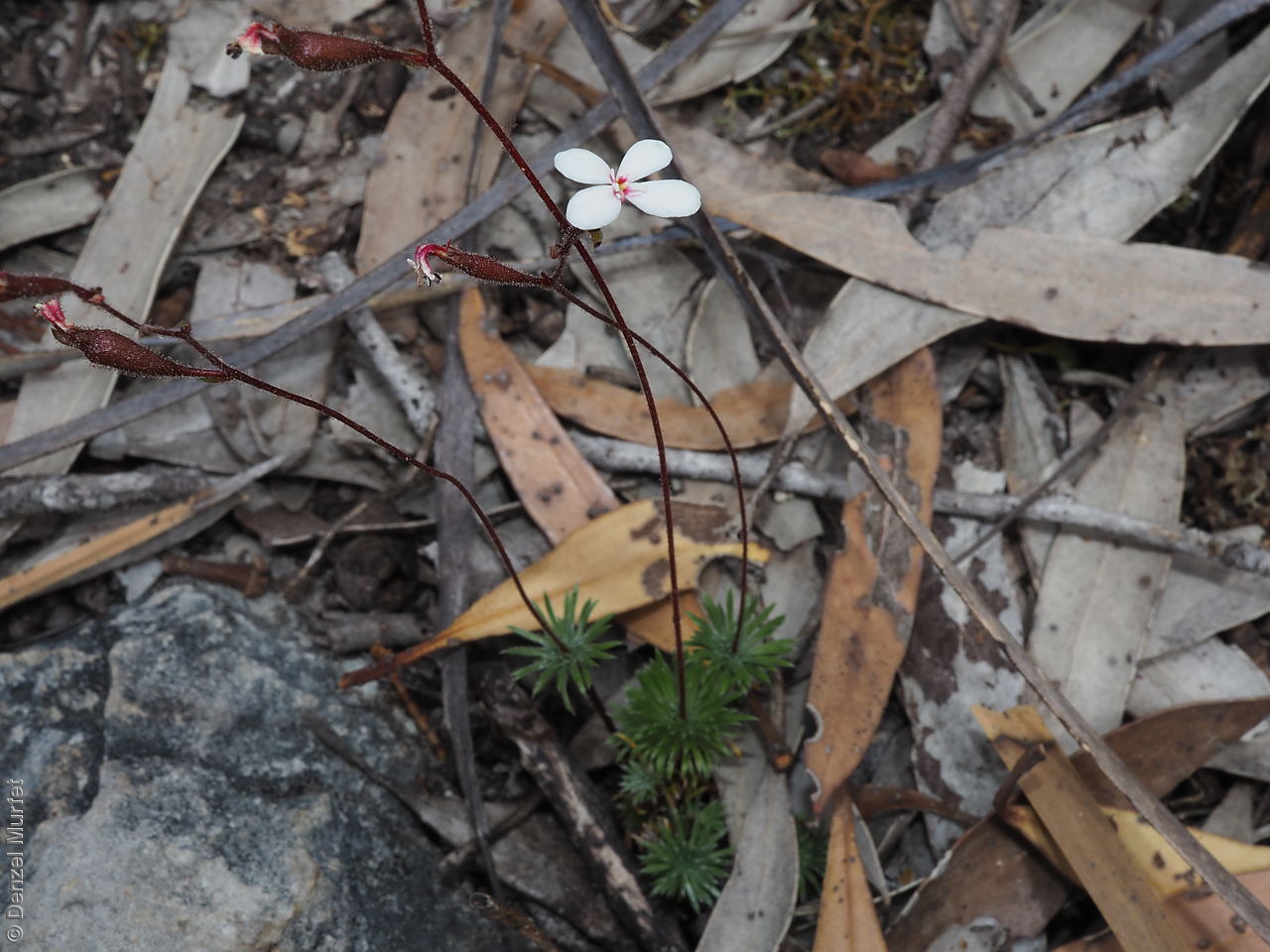
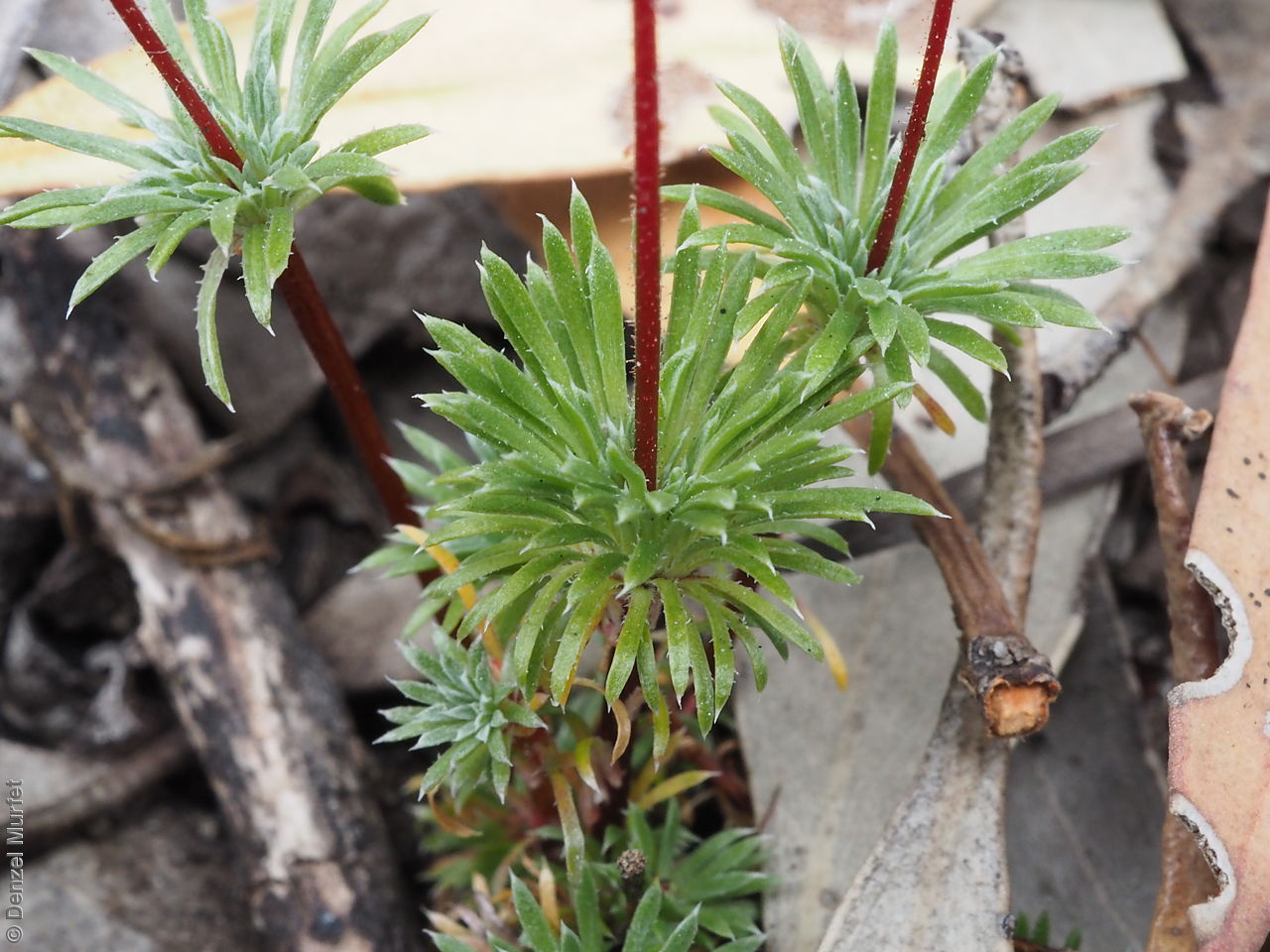
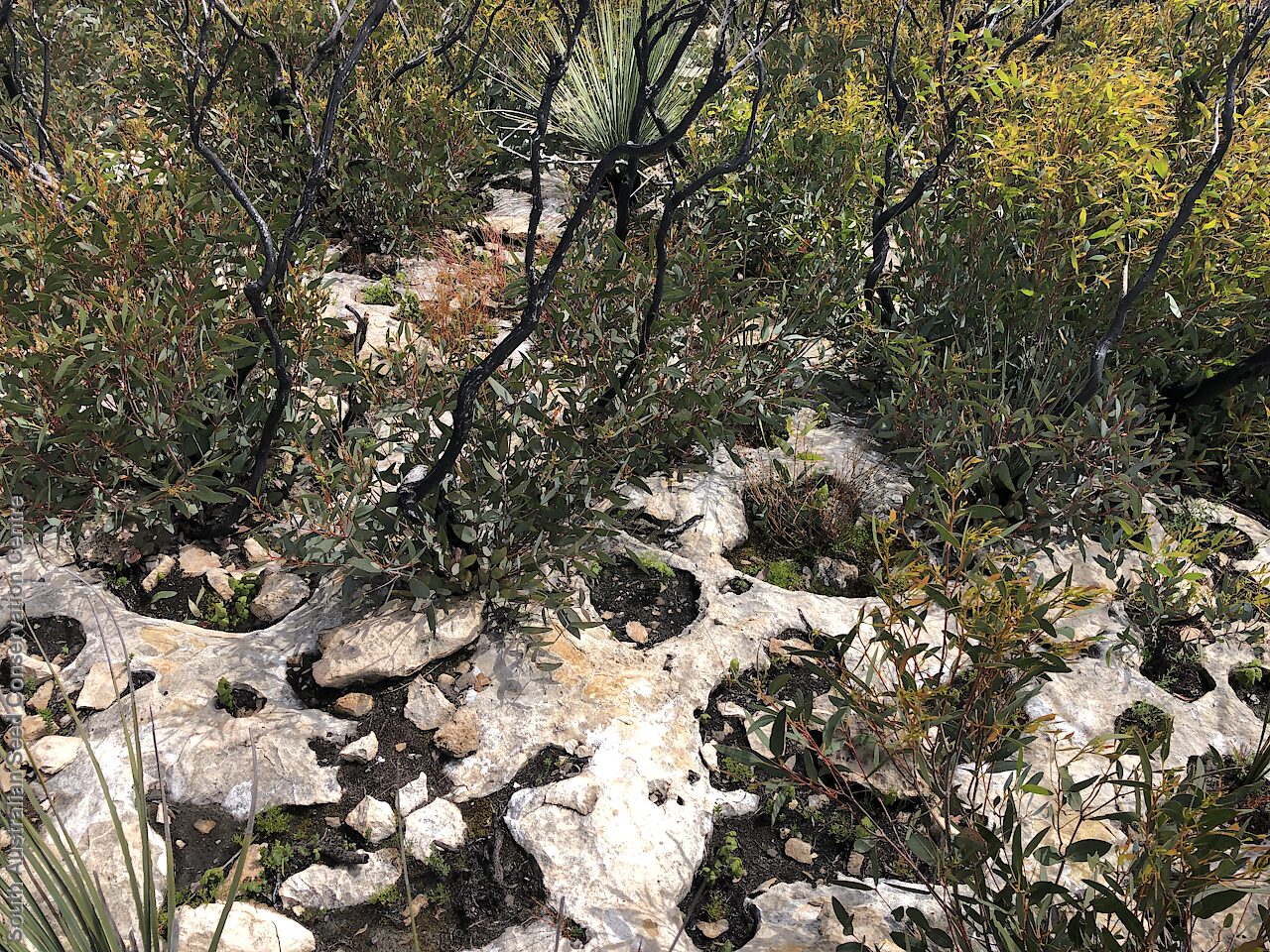
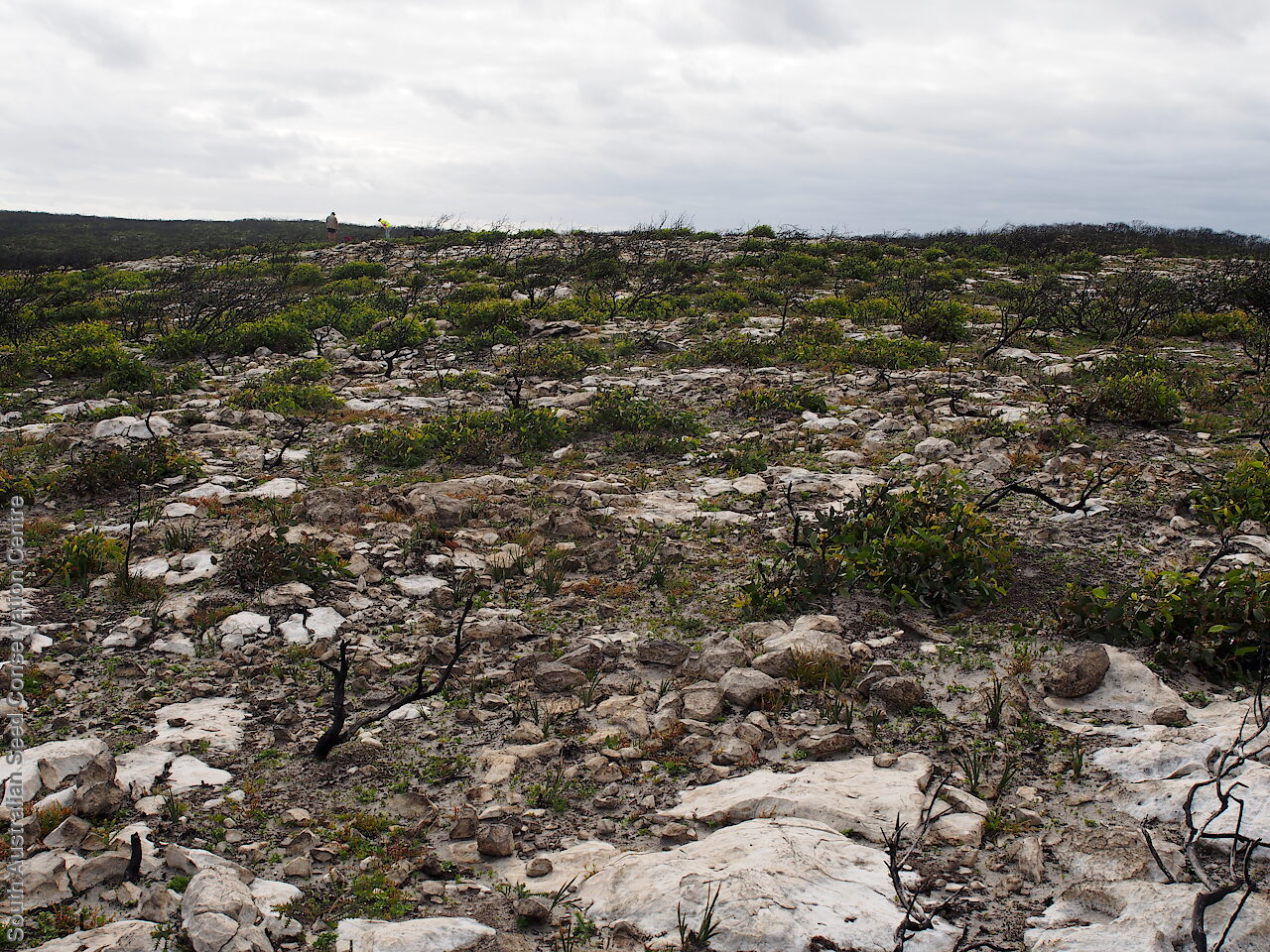
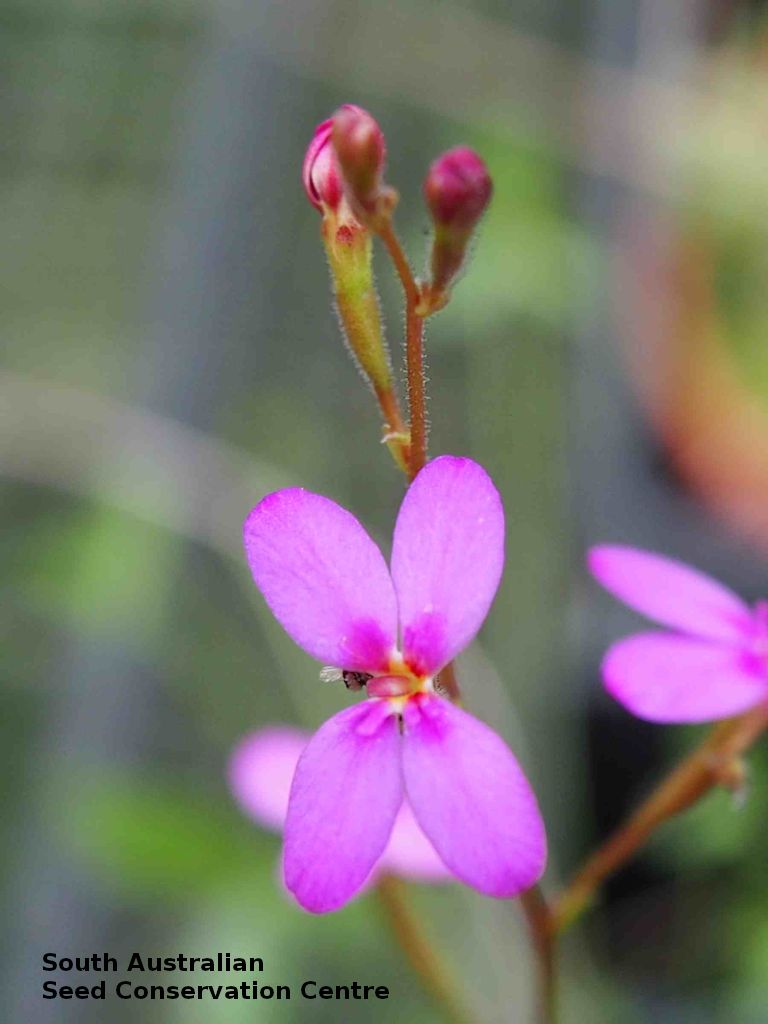
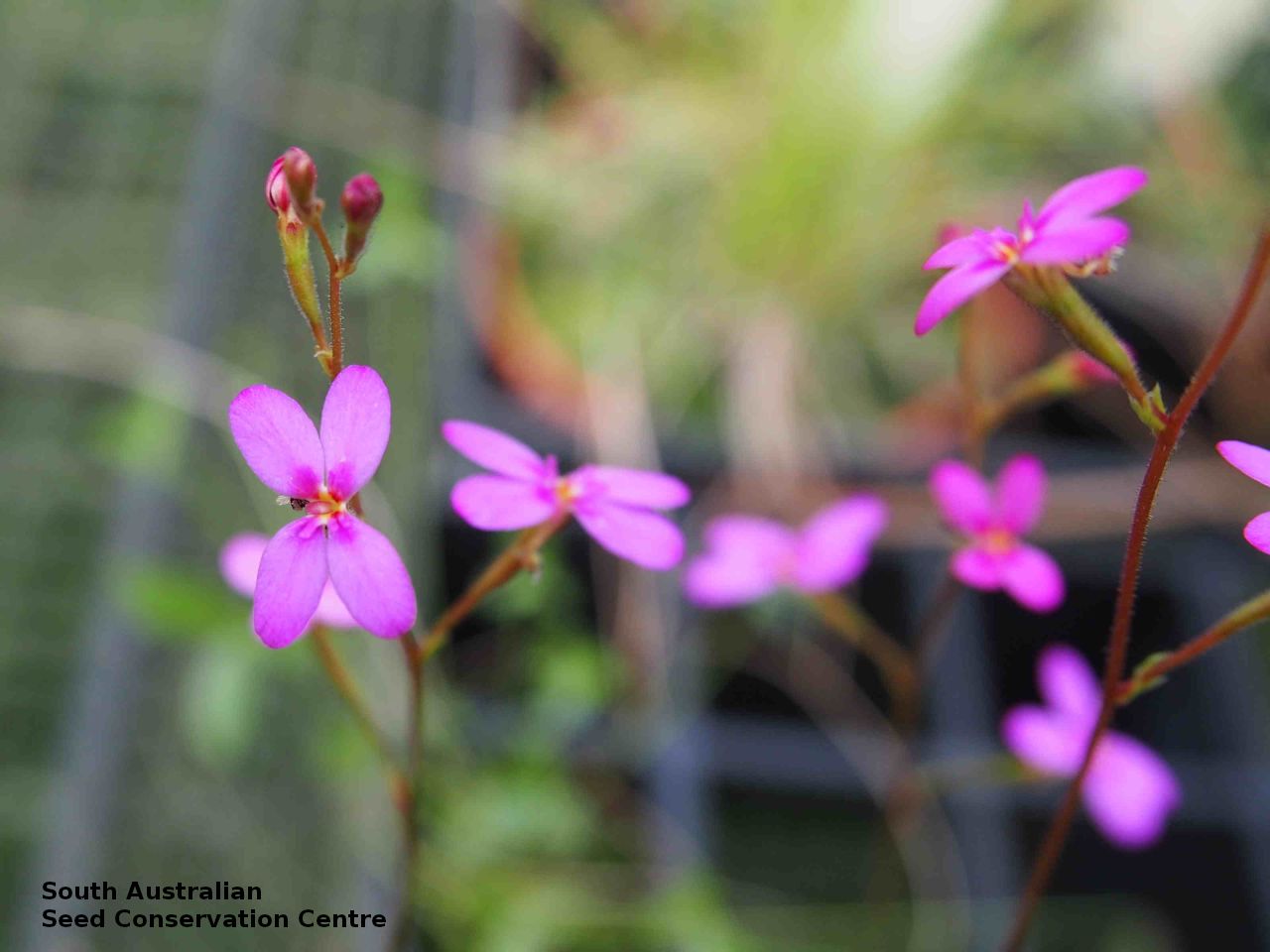
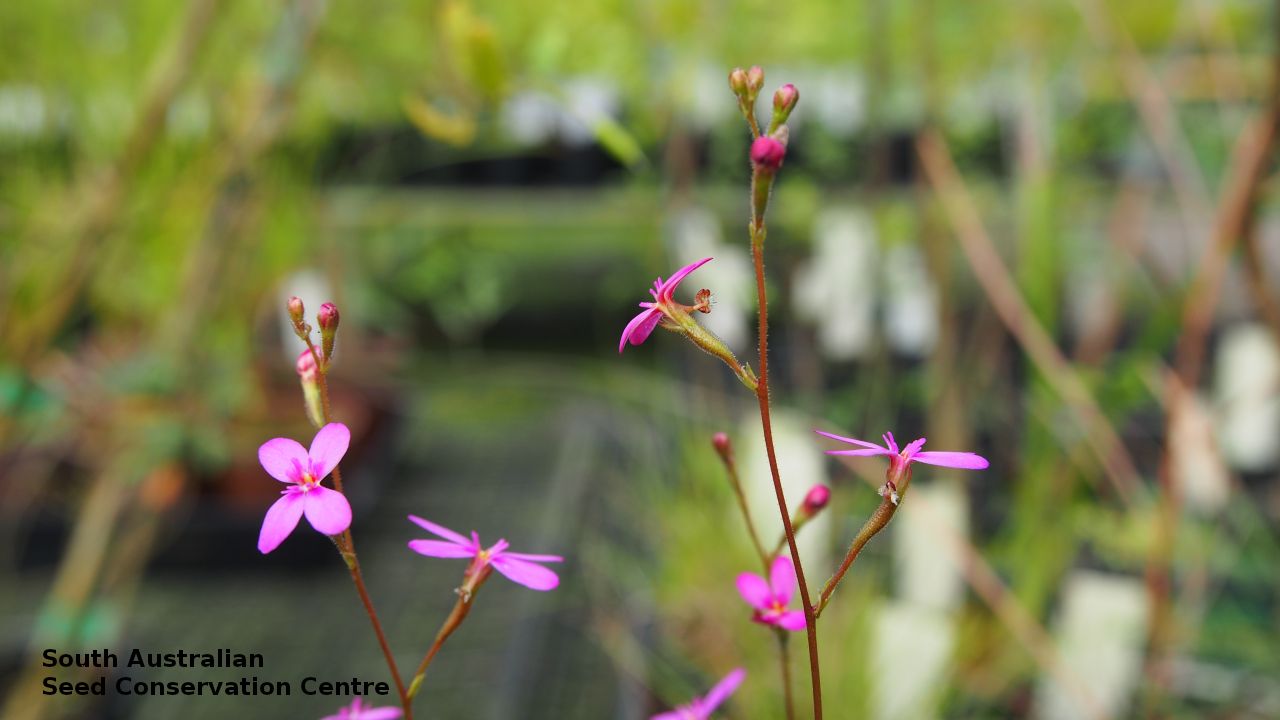
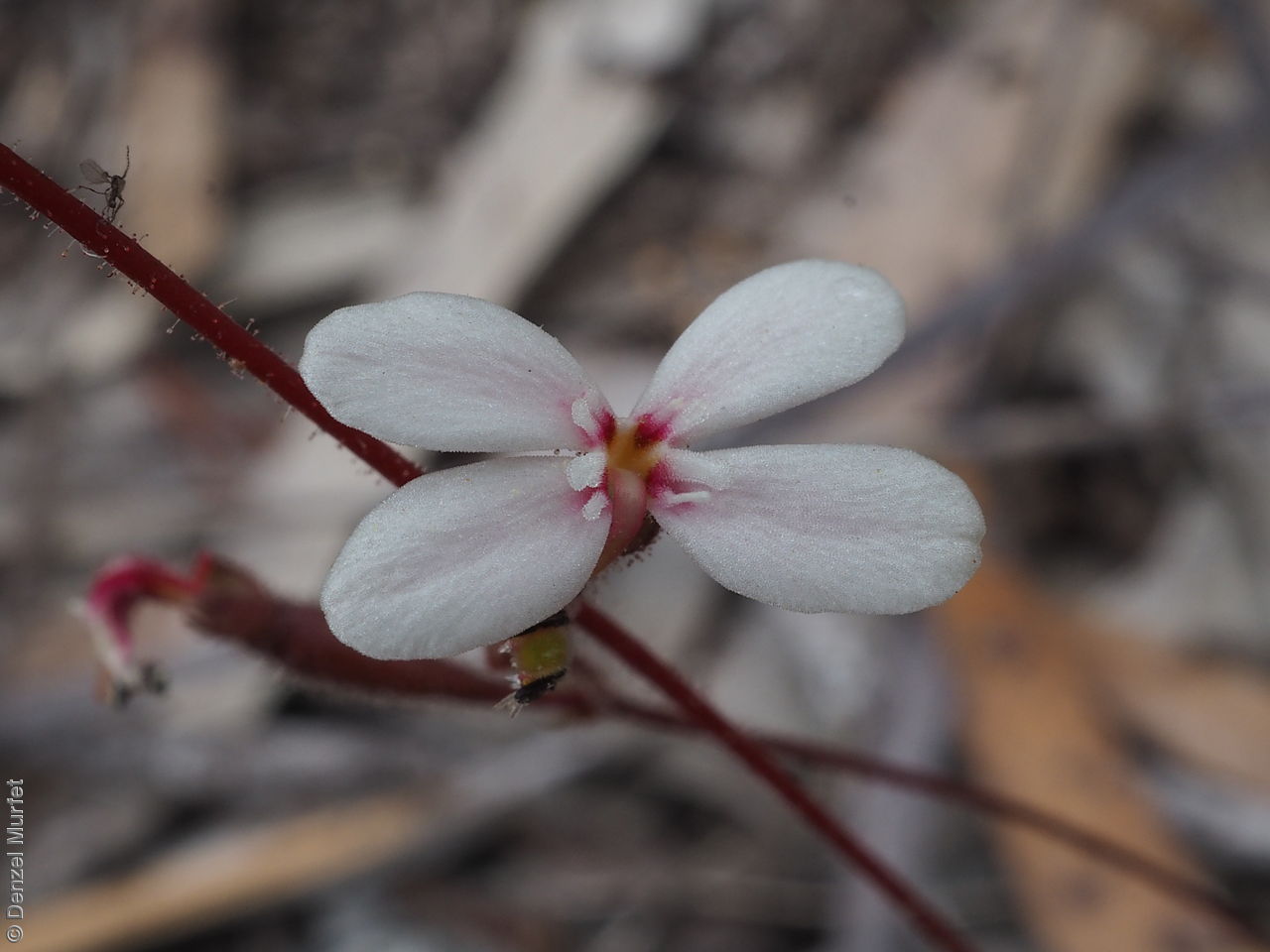
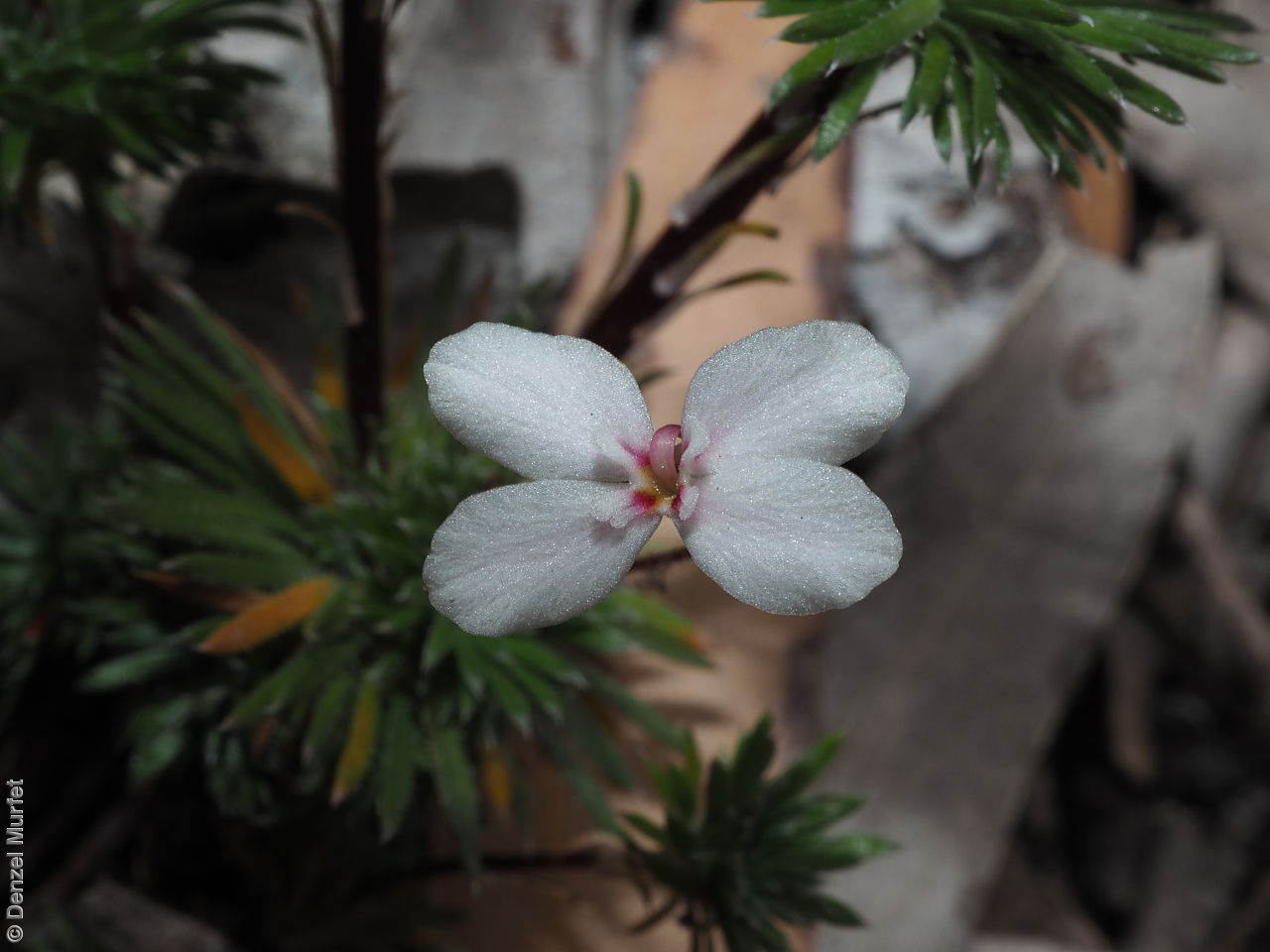
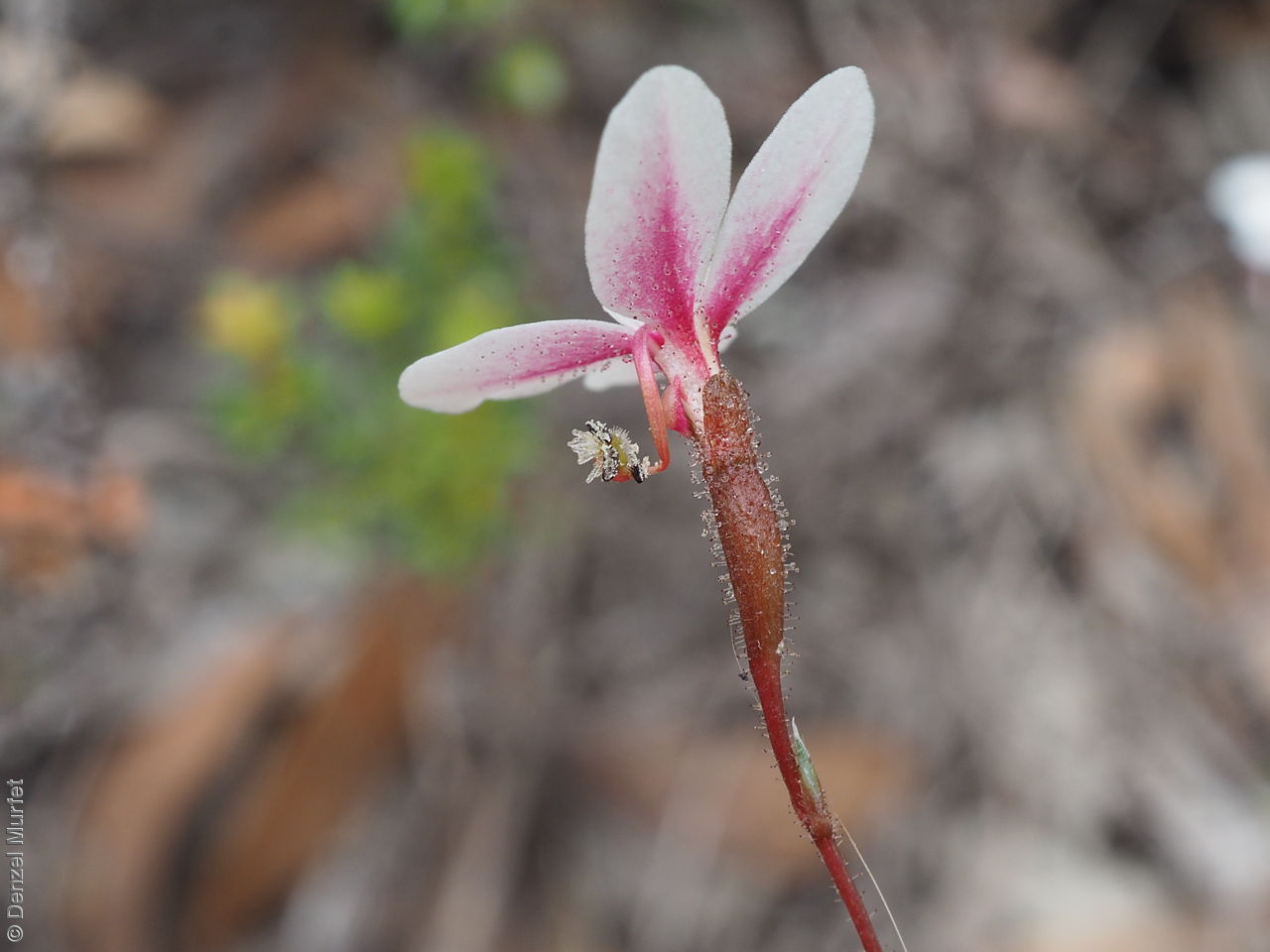
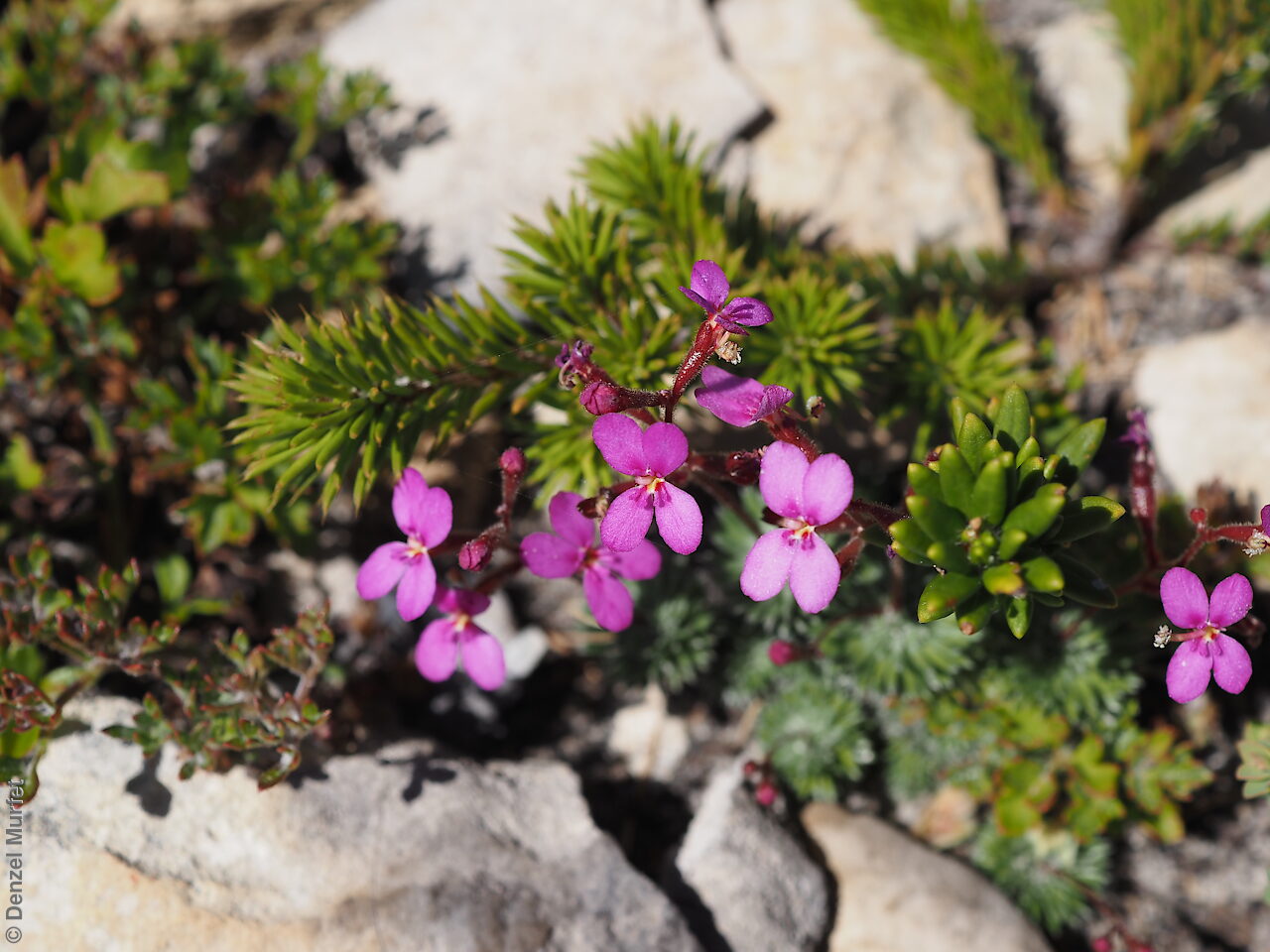
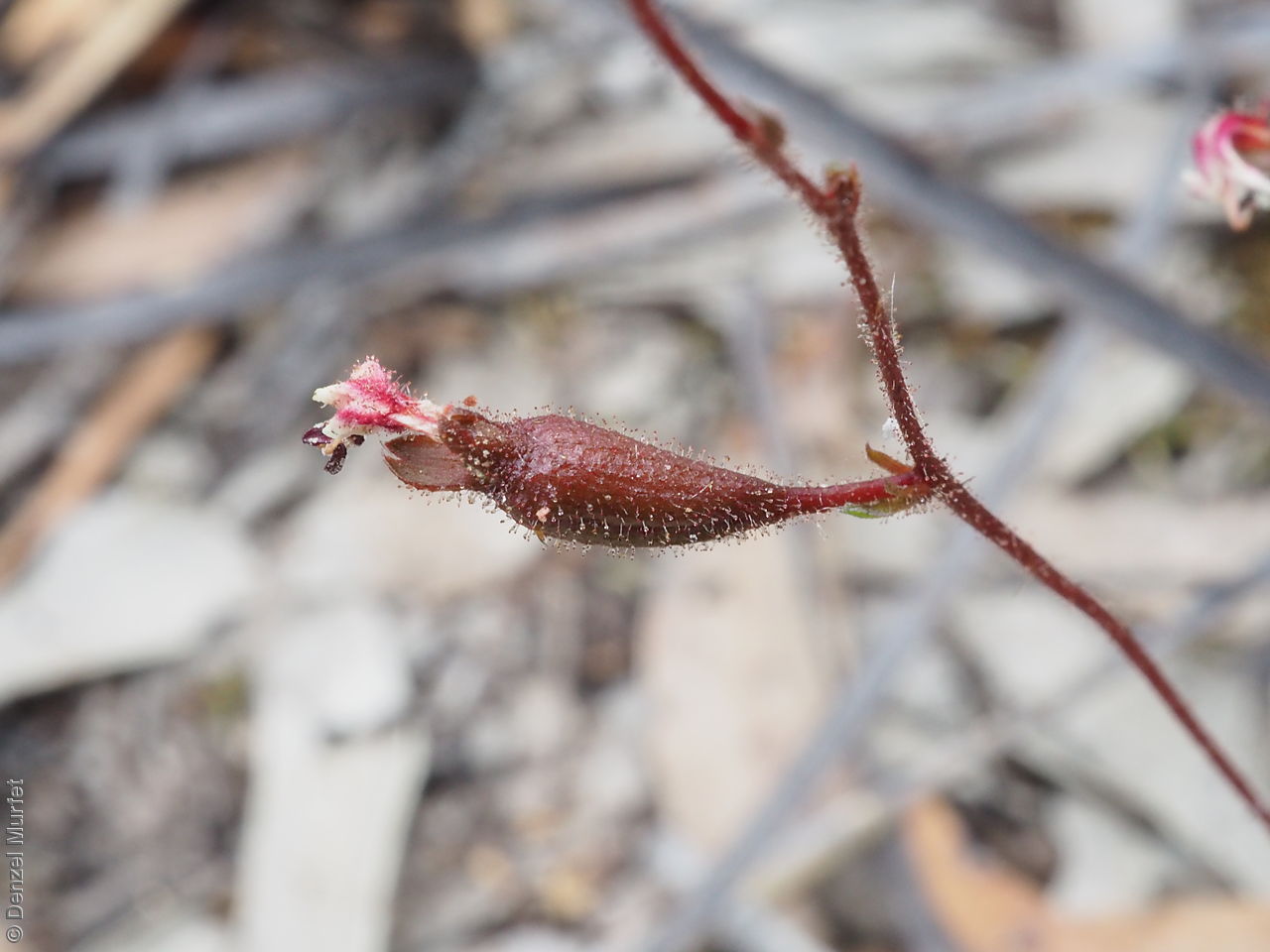
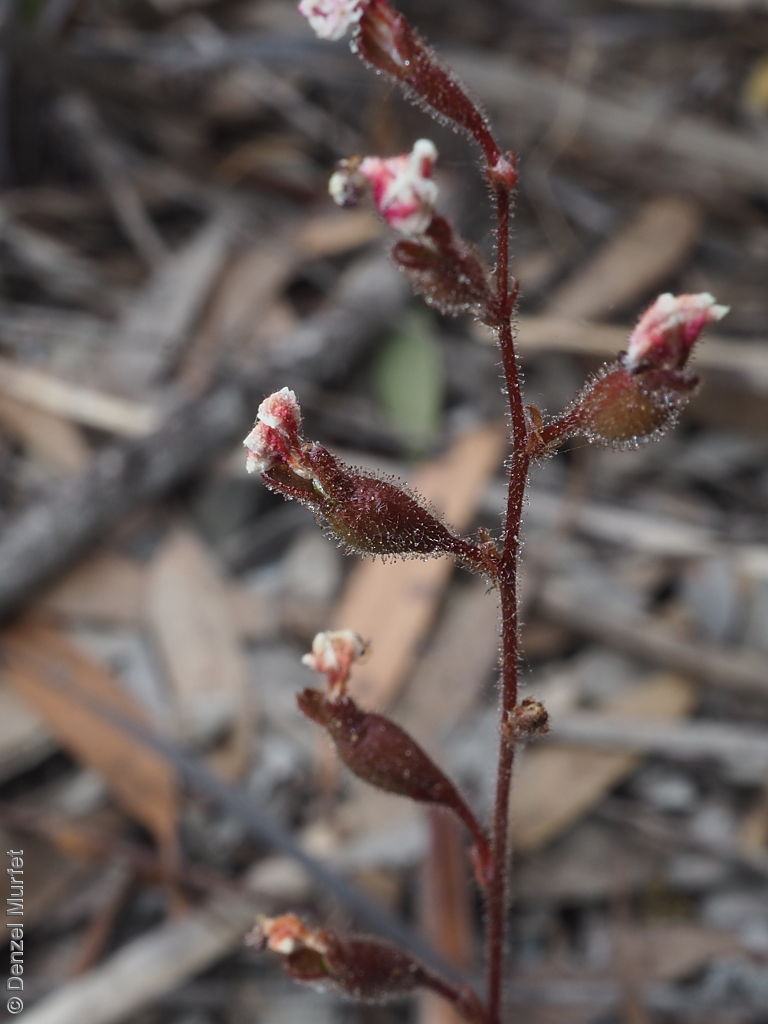
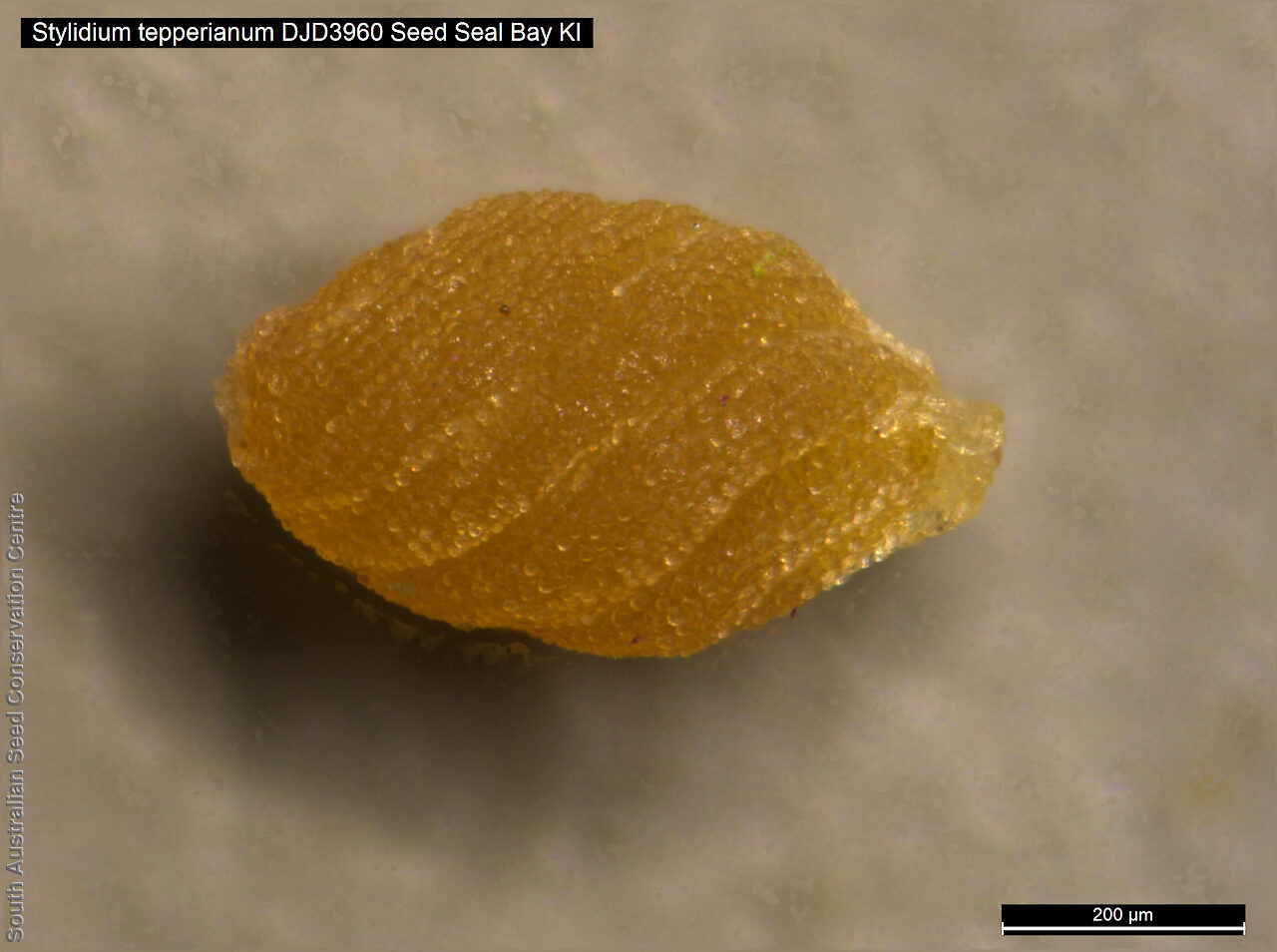
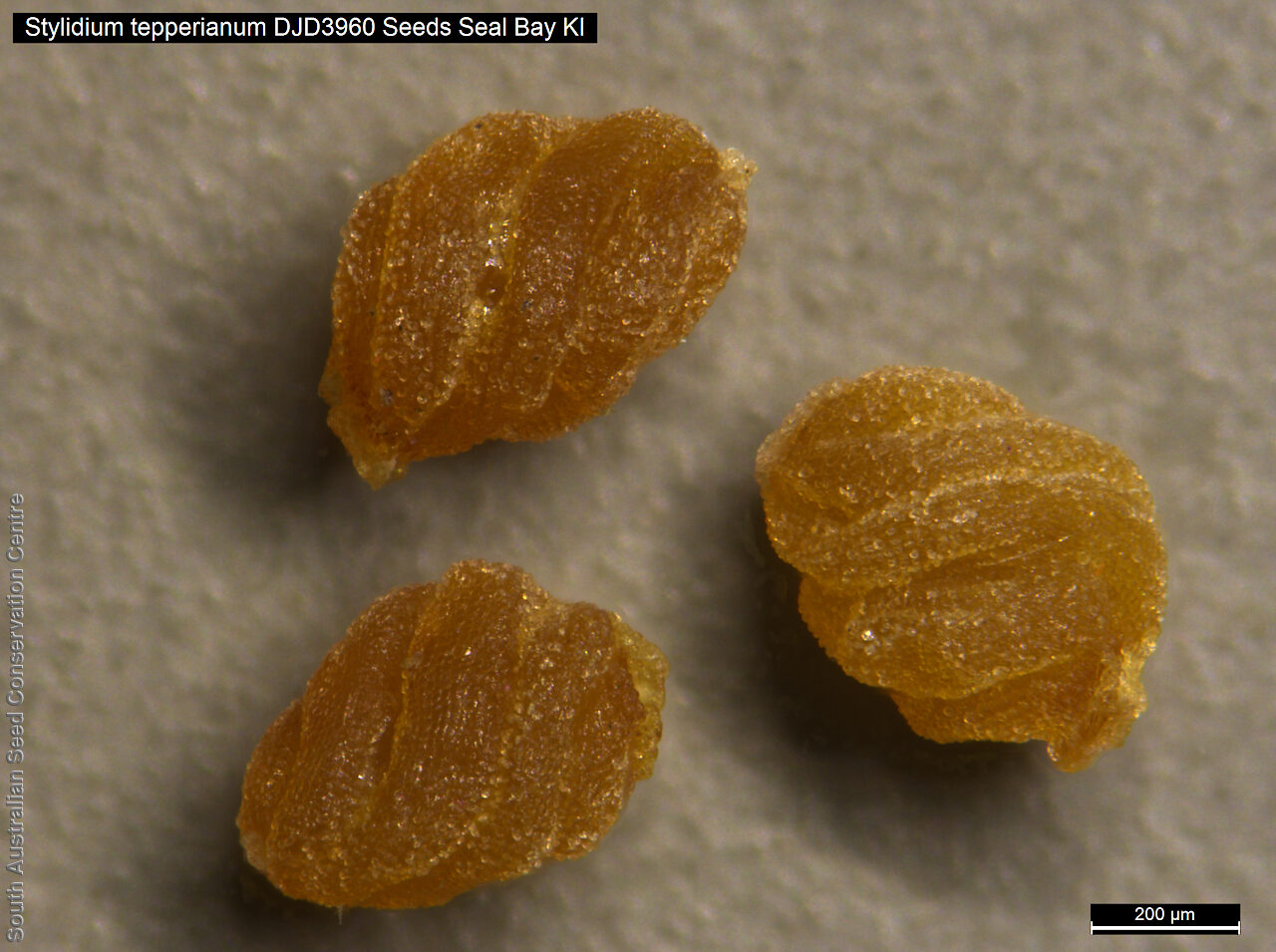
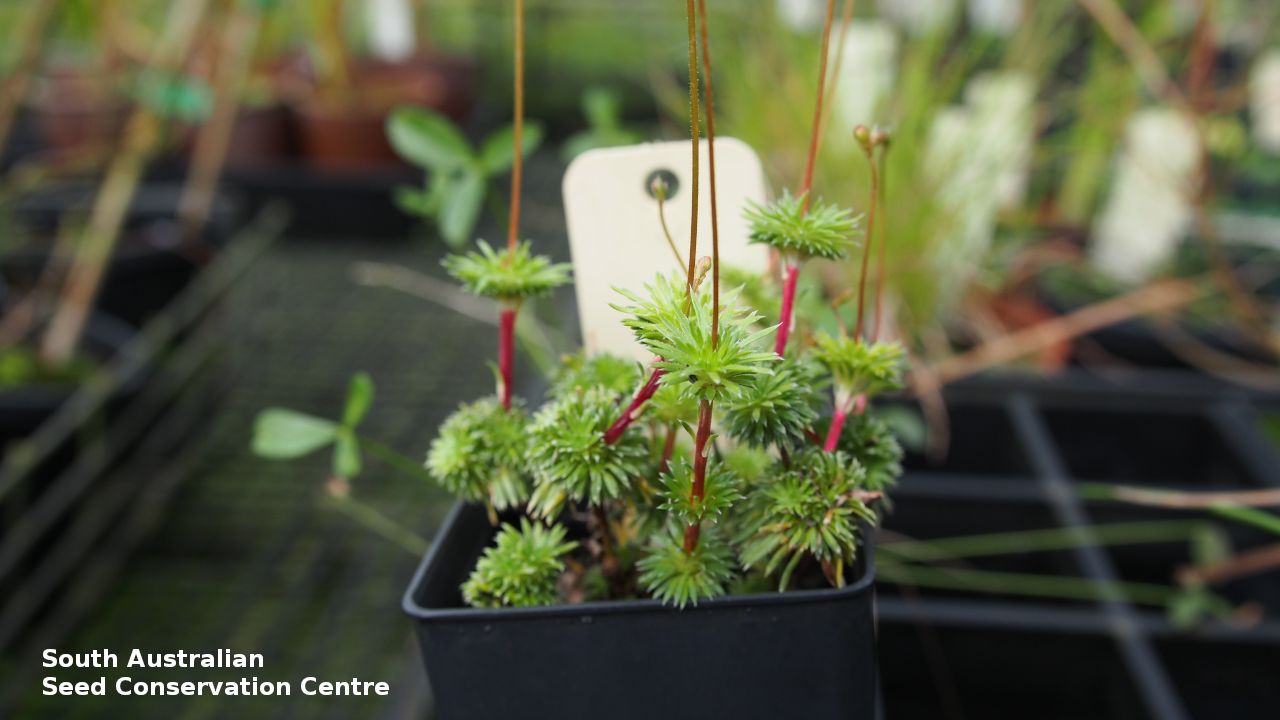
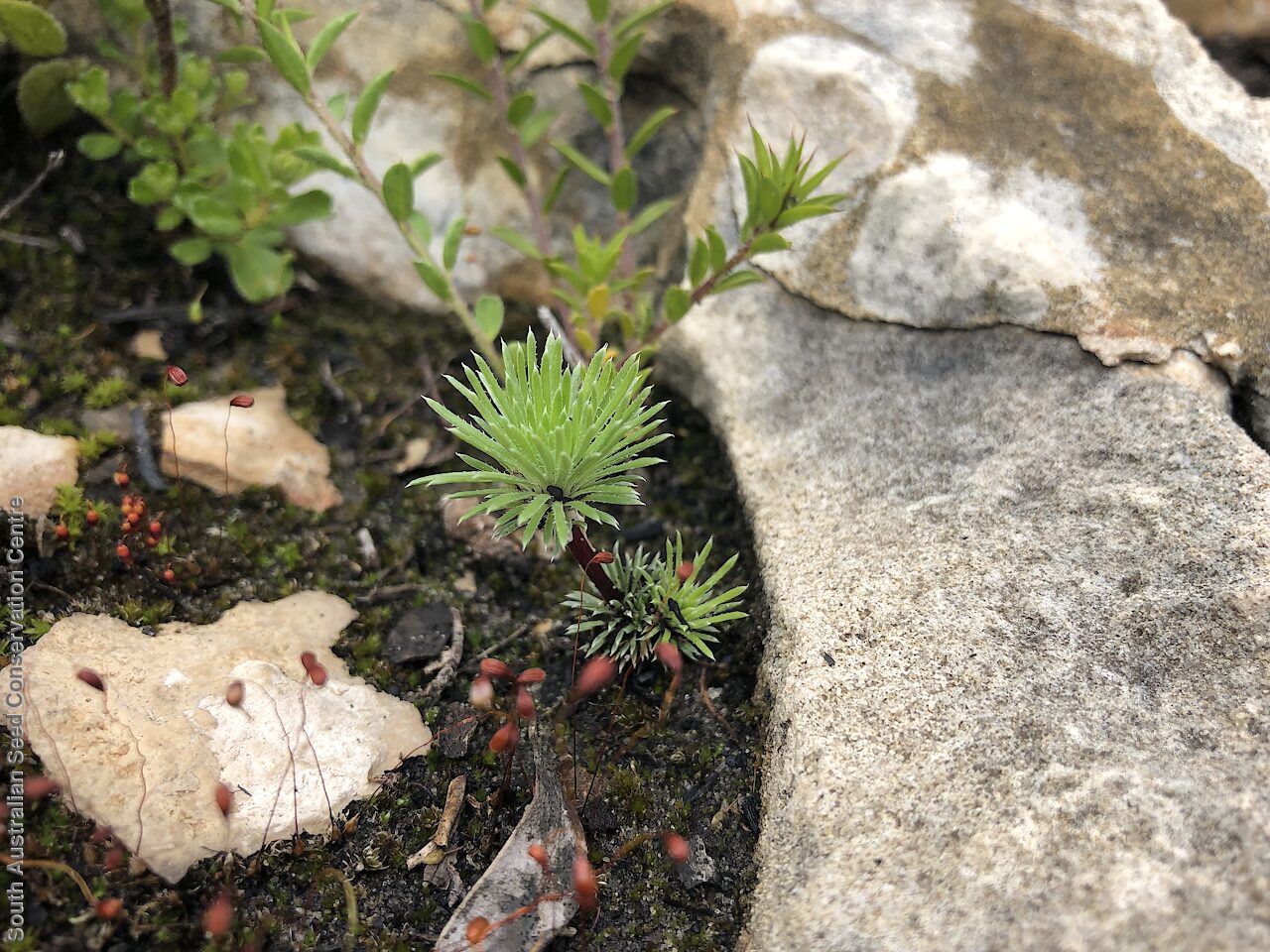
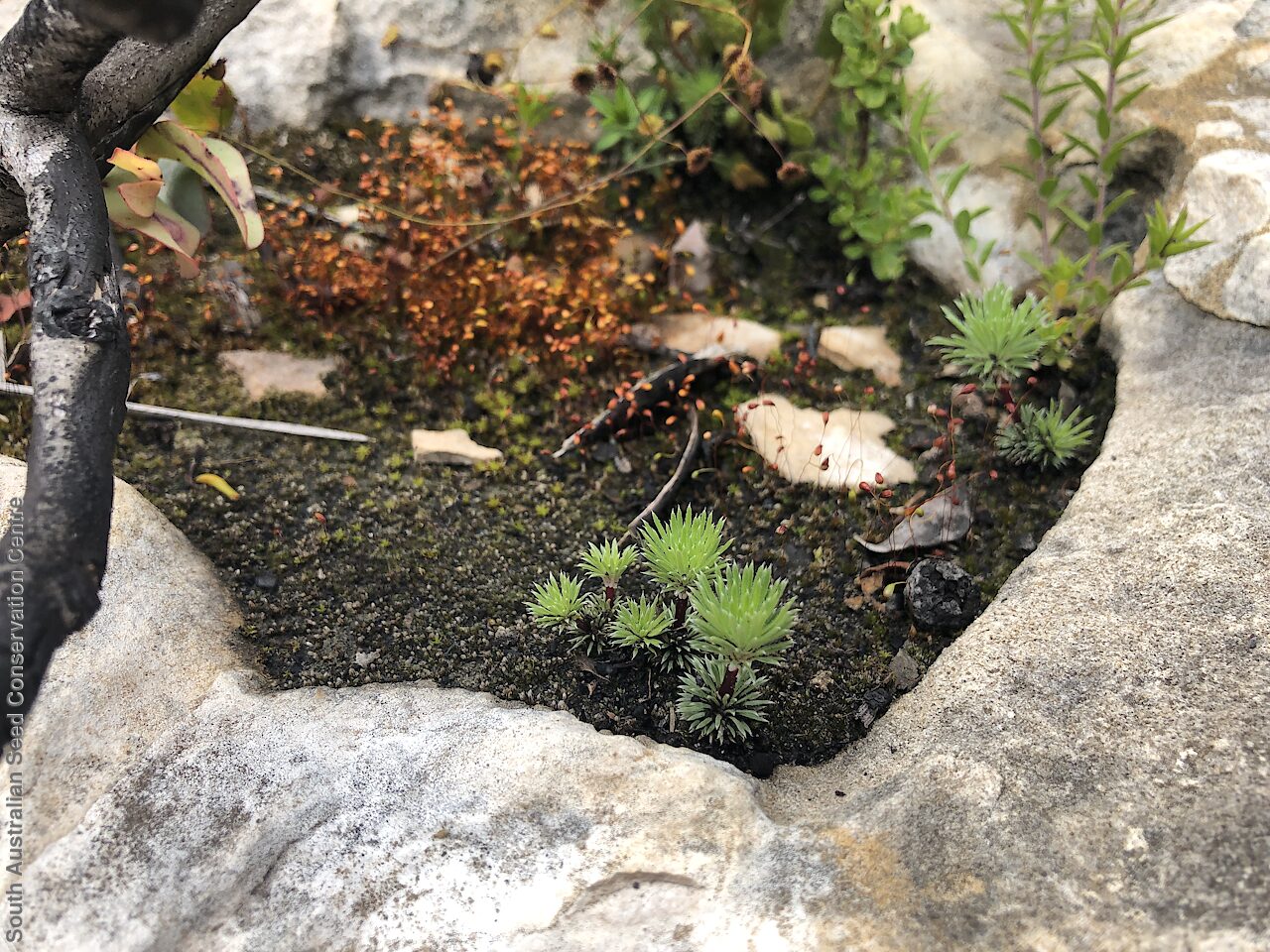
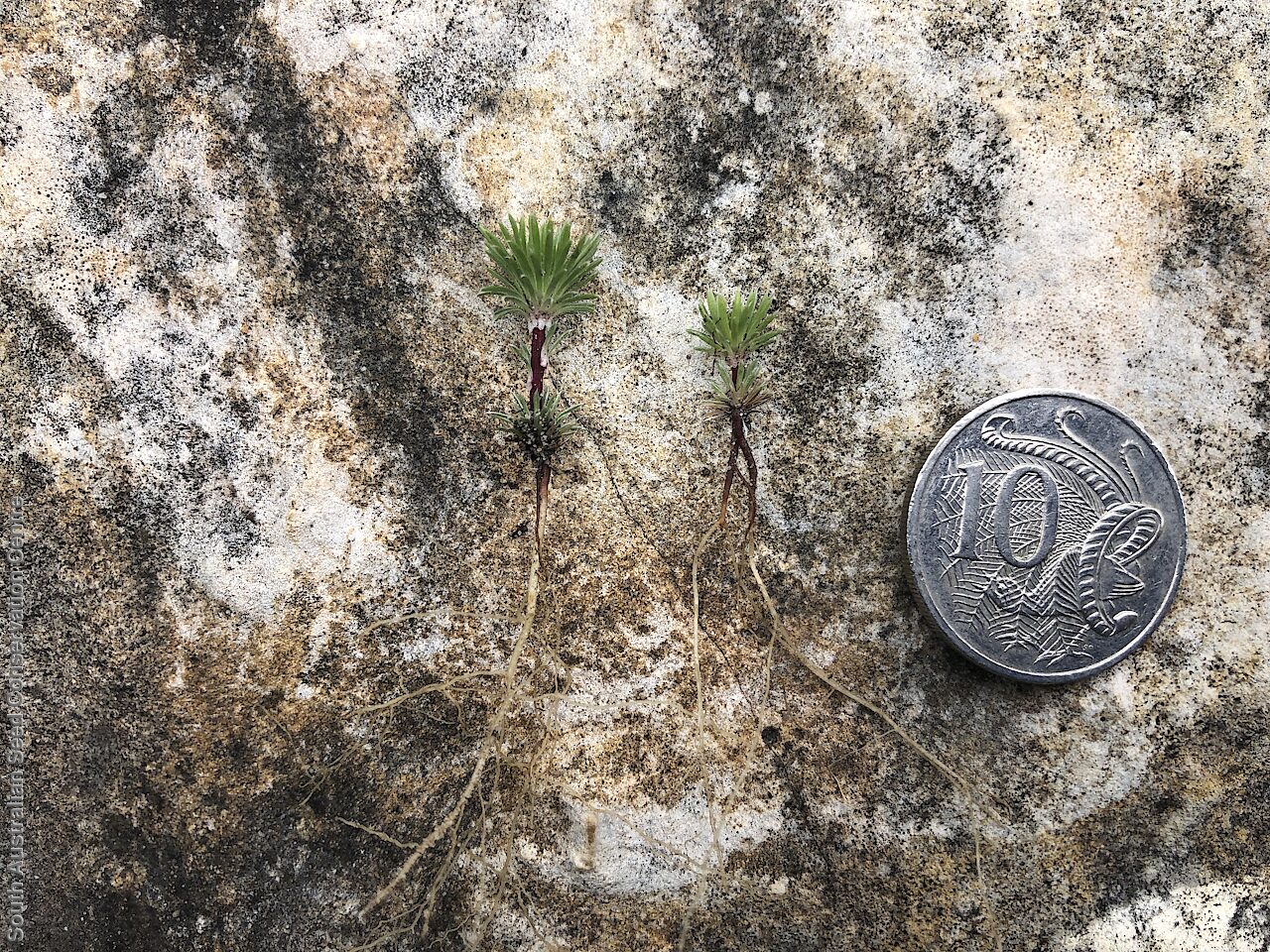
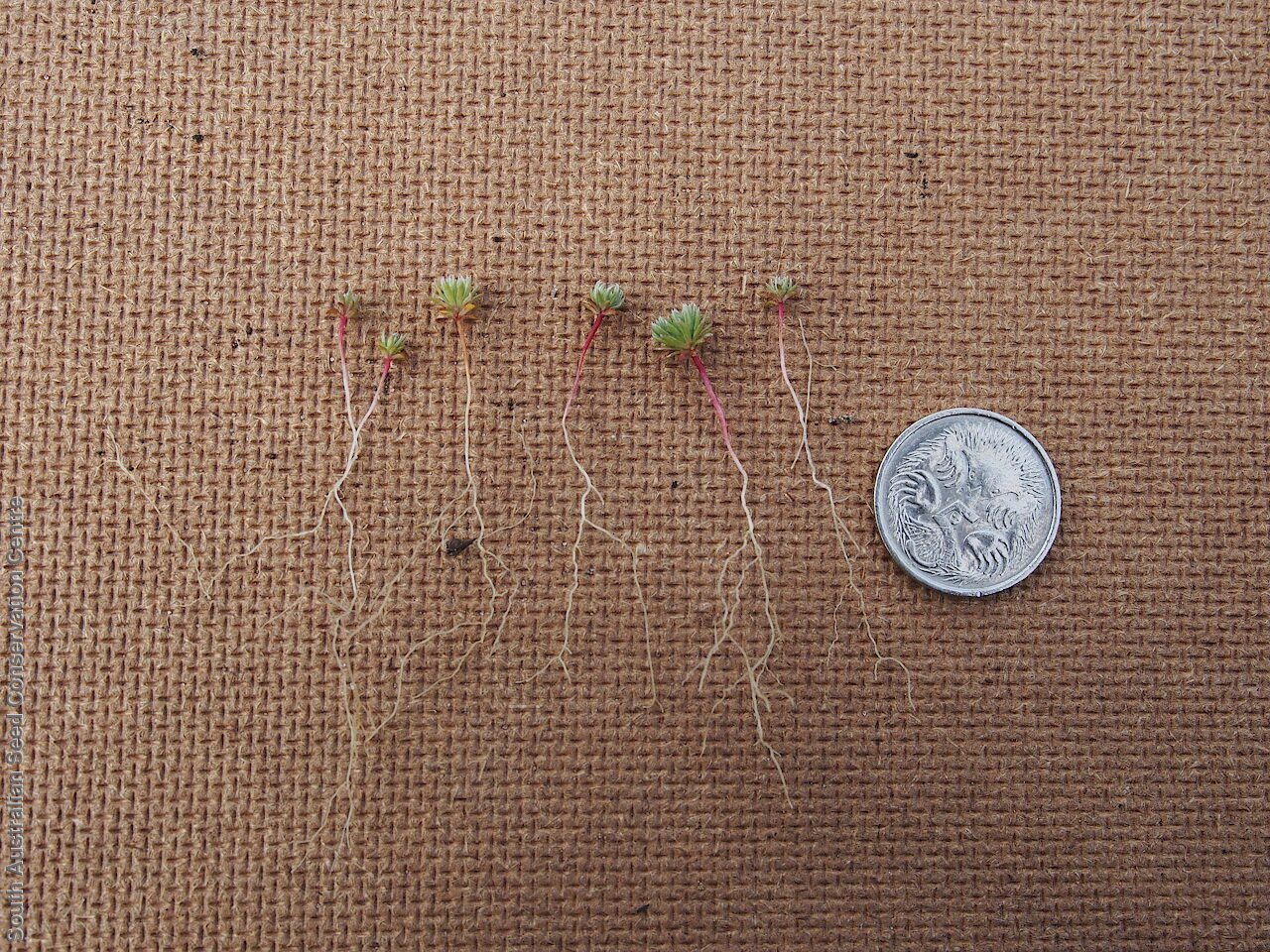
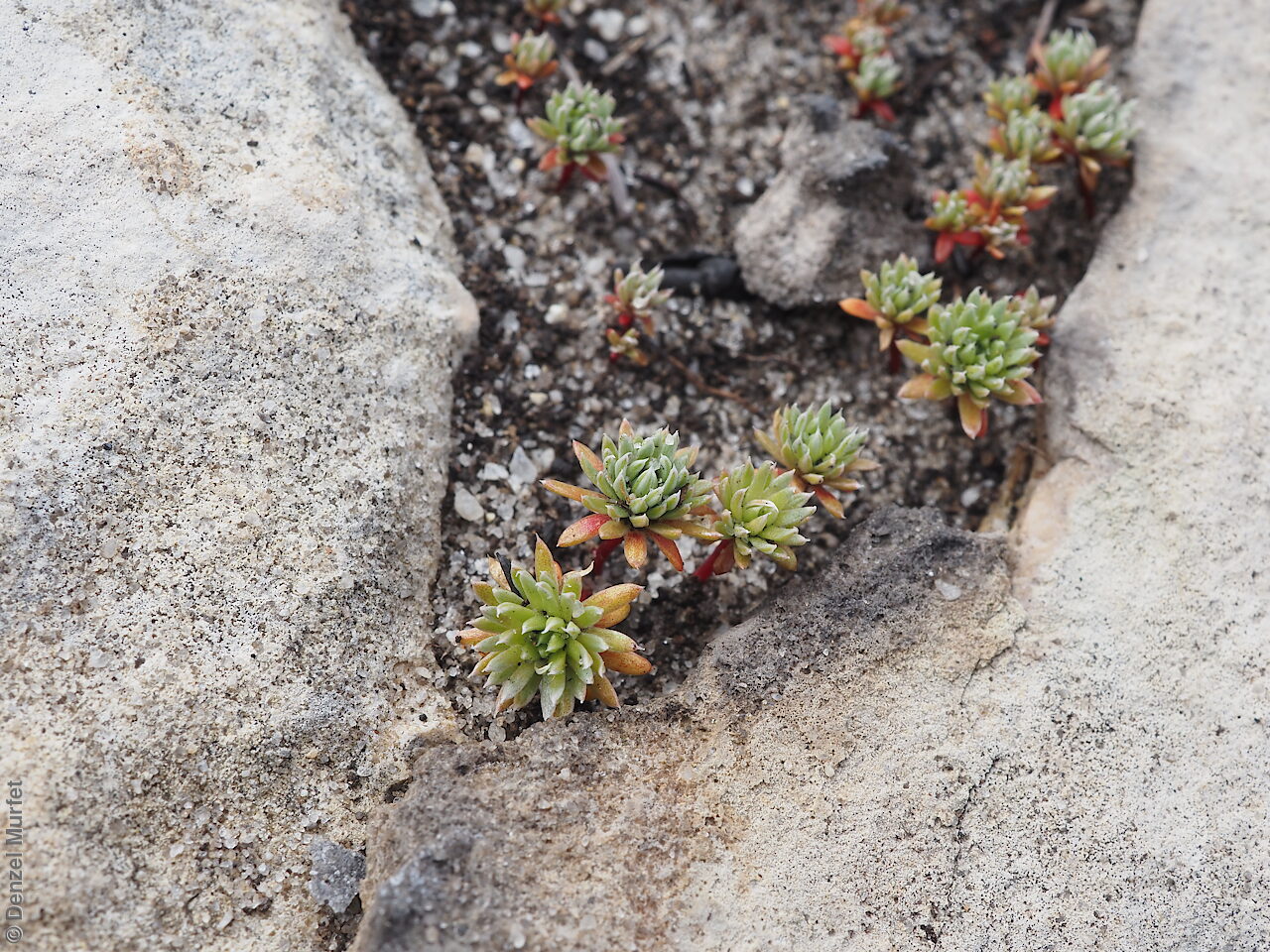
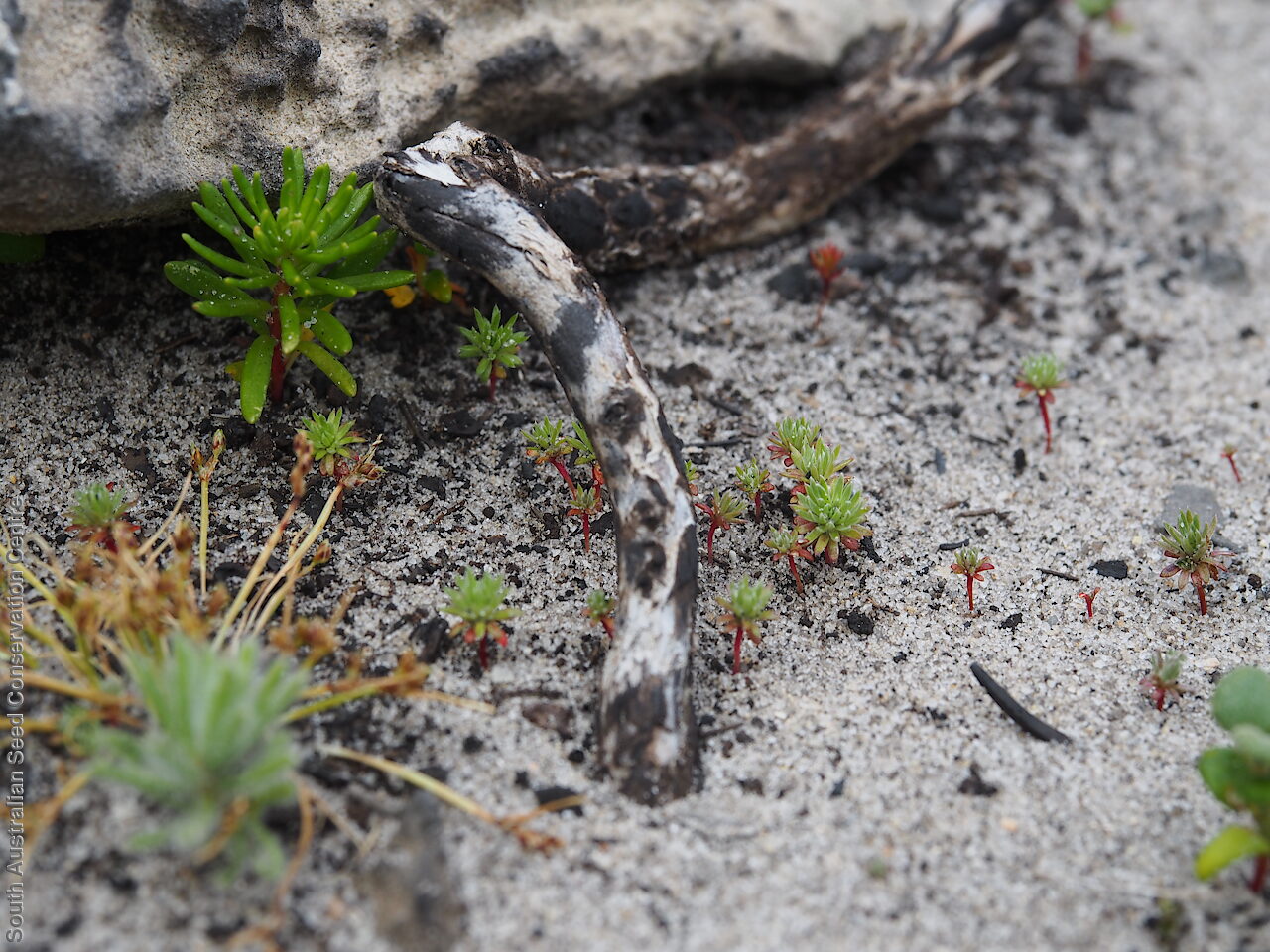
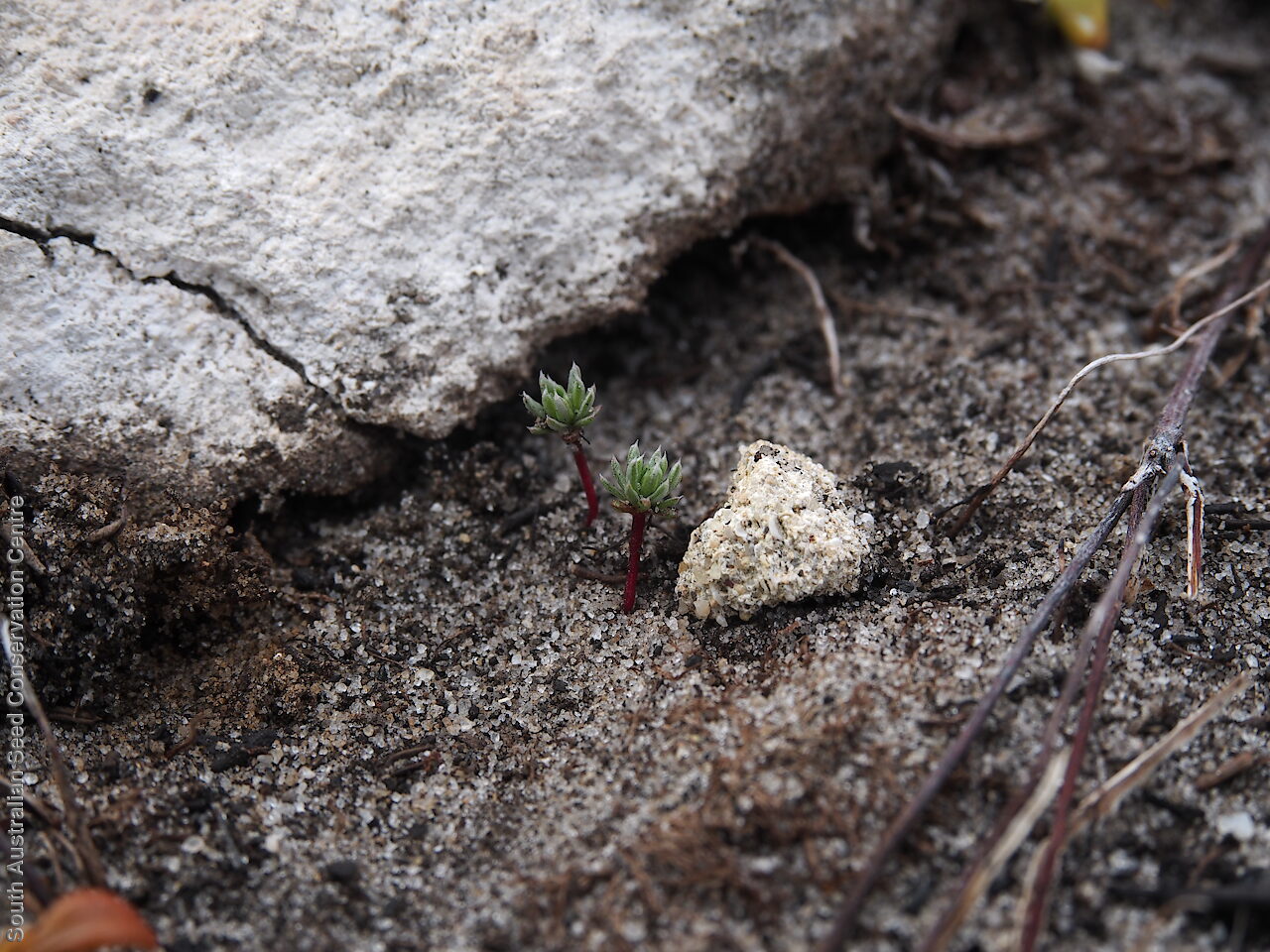

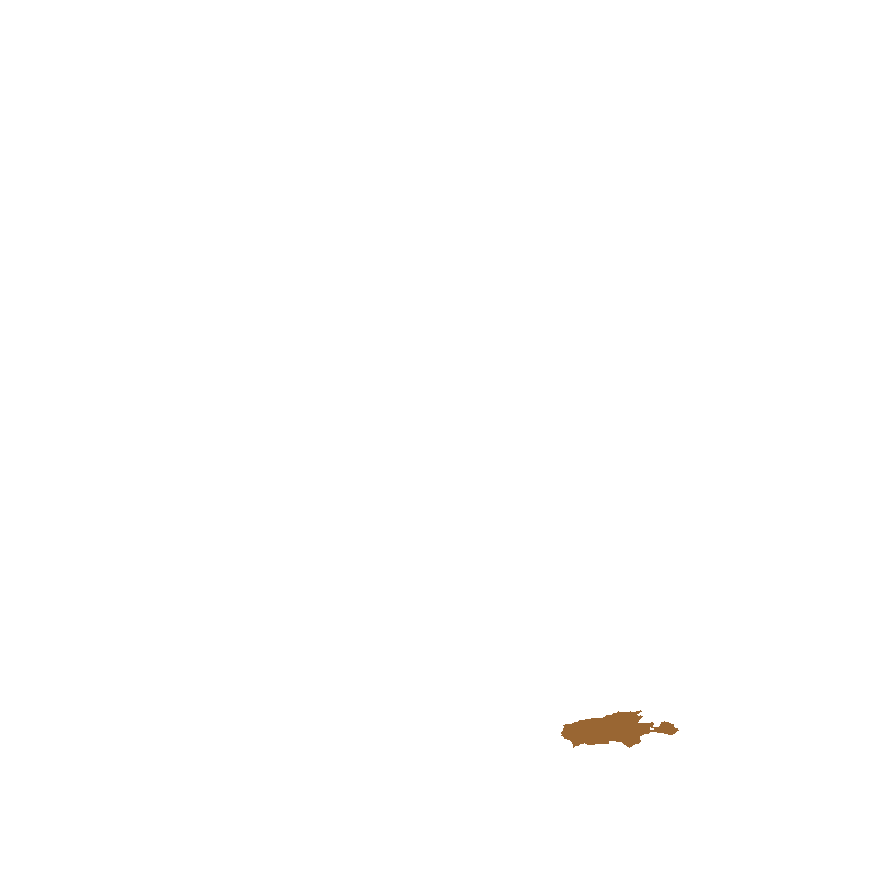
Botanical art
Prior names
Candollea tepperiana
Common names
Kangaroo Island Trigger-plant
Tepper's Trigger-plant
Etymology
Stylidium is a diminutive of Greek word 'stylos', meaning column; referring to the sensitive column consisting of the fused stamens and the style. Tepperianum named after Johann Gottlieb Otto Tepper (1841 - 1923) who collected the type specimen from Mount Taylor, Kangaroo Island in 1886.
Distribution and status
Endemic to South Australia and found only on Kangaroo Island, growing in shallow pockets of sandy-loam on limestone pavement in mainly coastal woodland and heath habitat. Native. Rare in South Australia.
Herbarium region: Kangaroo Island
NRM region: Kangaroo Island
AVH map: SA distribution map (external link)
Plant description
Tiny perennial herb to 10 cm tall when flowering, with procumbent stems and dense tufted rosettes of leaves at the nodes and reddish brown branches. Leaves sessile, slender and stiff to 9 mm long and 1 mm wide, pointed but often wearing off, entire or with stout cilia or short serrations, convex above, with a swollen raised main vein and recurved margins below, glabrous. Flowering at terminal of a long reddish stalk with a few white to pink flowers. Flowering between November and December. Capsule narrowly conical to 7 mm long, dehiscing along almost the whole length. Seeds tiny orange to 7 mm long and 4 mm wide with a twisted and tuberculate surface.
Seed collection and propagation
Collect seeds between December and January. Collect mature capsules, those that are fat, hard and turning pale brown. Place the capsules in a tray and leave to dry for one to two weeks. Then rub the capsules gently by hand to dislodge the seeds. Use a sieve to separate the unwanted material. Store the seeds with a desiccant such as dried silica beads or dry rice, in an air tight container in a cool and dry place. Seed viability is usually very high.
Fire Response
Obligate re-seeder, only tiny seedlings noted emerging in fire scars and no re-sprouting observed.
Longevity: >20 years
Time to flowering: 4 to 5 years
Recovery Work
In 2020-2021 this species was assessed post-fire in 1 year and 2 year old fire scars. A total of 4,600 seeds have been collected & banked for a population outside the 2020 fire scar at Seal Bay region. Further populations will be assessed and seeds collected on the western side of Kangaroo Island in 2021–2022. Germination screening testing the response to fire cues will be undertaken in 2021.This project was supported by the Wildlife & Habitat Bushfire Recovery program.
| Location | No. of seeds (weight grams) | Number of plants | Date collected | Collection number Collection location | Date stored | % Viability | Storage temperature |
|---|---|---|---|---|---|---|---|
| BGA MSB | 6,000 (0.31 g) 6,000 (0.31 g) | 278 | 9-Jan-2004 | PJA82 Kangaroo Island | 14-Aug-2006 | 100% | +5°C, -18°C |
| BGA | 3,400 (0.194 g) | 50+ | 18-Jan-2017 | DJD3611 Kangaroo Island | 1-Nov-2017 | 100% | +5°C, -18°C, -80°C |
| BGA | 4,600 (0.180 g) | 50+ | 11-Dec-2020 | DJD3960 Kangaroo Island | 28-Jun-2021 | 95% | -18°C |
Number of plants: This is the number of plants from which the seeds were collected.
Collection location: The Herbarium of South Australia's region name.
% Viability: Percentage of filled healthy seeds determined by a cut test or x-ray.